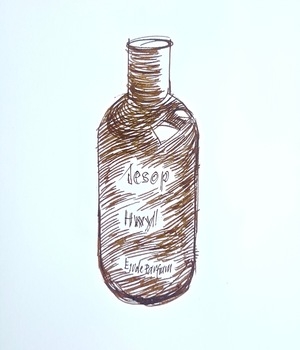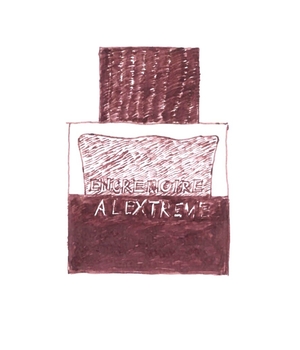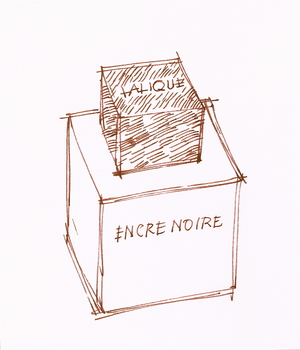Tagged With ‘cypress’
Aesop
Hwyl
1 December, 2017
 Since 2004, when its first store opened in the corner of a Melbourne car-park, Aesop has developed into a global brand, thanks to its simple but sensual products, individually designed boutiques and large injections of private capital (most recently from Natura Cosméticos, the Brazilian version of Avon, which took full control of the brand in 2016).
Since 2004, when its first store opened in the corner of a Melbourne car-park, Aesop has developed into a global brand, thanks to its simple but sensual products, individually designed boutiques and large injections of private capital (most recently from Natura Cosméticos, the Brazilian version of Avon, which took full control of the brand in 2016).
Given that fragrance was always part of its products’ appeal (founder Dennis Paphitis got the original idea after adding essential oils to hair bleach to disguise the smell of ammonia), it’s no surprise that Aesop has flirted with perfume over the years. In 2005 it launched Marrakech, followed by Mystra in 2006, both of which were subsequently discontinued, though they still have their fans – perfumer Paul Schutze still has his roller-ball version of Marrakech, which he suspects was a commercial disaster not because of the fragrance, which he loves, but because ‘you use so little scent with the roller-ball that you never need to buy another one’.
In 2014 Aesop returned to perfume with Marrakech Intense, followed by Tacit in 2015 and now, in 2017, Hwyl. Though the name is Welsh, the scent is inspired by smoke floating through a Japanese forest of hiba cypress trees (the conifer Thujopsis dolabrata, also known as Hiba arborvitae), and that’s pretty much what you smell when you first put it on. The formula, which was devised by French perfumer Barnabé Fillion (who previously contributed to Marrakech Intense), also includes a good dose of thyme with hints of spice, moss and vetiver.
Hywl is my favourite of the three ‘new’ Aesop perfumes so far, though I think it’s rather overpriced at £83 for 50ml, especially as it doesn’t last for more than two or three hours on my skin (Aesop kindly sent me a bottle to review). It enters an increasingly crowded field of perfumes based around the smells of incense and smoke, most of them aimed at men, and while it’s nice of its kind, I can’t say that it’s especially original. But then perhaps Aesop knows that its customers aren’t looking for ground-breaking scents: just something that’s easy to wear and fairly on-trend, which Hwyl certainly is.
Lalique
Encre Noire à l’Extrême
18 November, 2016
 Lalique has been associated with perfume since 1907, when its founder, René Lalique, began to produce alluring glass bottles for the prodigiously entrepreneurial French perfumer François Coty. But it wasn’t until 1992 that the company launched a perfume of its own with Lalique de Lalique.
Lalique has been associated with perfume since 1907, when its founder, René Lalique, began to produce alluring glass bottles for the prodigiously entrepreneurial French perfumer François Coty. But it wasn’t until 1992 that the company launched a perfume of its own with Lalique de Lalique.
Encre Noire – literally ‘black ink’ – was released in 2006, and was quickly hailed as one of the best vetiver scents around. Created by the talented perfumer Nathalie Lorson from the Swiss fragrance-and-flavour firm Firmenich, it blends good-quality vetiver (whose earthy, slightly bitter smell comes from the roots of a tropical grass) with the woody notes of cypress and a long-lasting synthetic called Cashmeran, whose effect is as plush as its name.
Though Encre Noire is still available, and presumably a steady seller, Lalique has celebrated its 10th anniversary by launching a slightly more powerful, punchy version called Encre Noire à l’Extrême. Created again by Nathalie Lorson, the new perfume blends two different vetivers, one from Haiti and the from Java, and adds touches of iris, incense, sandalwood and patchouli.
If rather stronger and heavier than the earlier Encre Noire, it’s still a very attractive fragrance, and while Lalique claims that Encre Nore à l’Extrême ‘redefines masculinity’, we feel that it would smell equally appealing on a man or a woman. Think ink.
Lalique
Encre Noire
15 April, 2015
 Calling a perfume ‘black ink’ has intriguing connotations. ‘Black’ or ‘Noir(e)’ has been the perfume industry’s shorthand for ‘edgy’ ever since the 1998 launch of the striking but hard-to-wear Bulgari Black. Among the many followers in its wake we’ve had Ambre Noir, 1881 Black, Armani Privé Cuir Noir, Bois Noir, Coco Noir, Cologne Noir, Dahlia Noir, Datura Noir, Eau Noir, Fourreau Noir, even (I kid you not) Hello Kitty Noir.
Calling a perfume ‘black ink’ has intriguing connotations. ‘Black’ or ‘Noir(e)’ has been the perfume industry’s shorthand for ‘edgy’ ever since the 1998 launch of the striking but hard-to-wear Bulgari Black. Among the many followers in its wake we’ve had Ambre Noir, 1881 Black, Armani Privé Cuir Noir, Bois Noir, Coco Noir, Cologne Noir, Dahlia Noir, Datura Noir, Eau Noir, Fourreau Noir, even (I kid you not) Hello Kitty Noir.
So Encre Noire (which was launched in 2006) follows a bit of a bandwagon, though at least its name is better than most. It’s a nostalgic name, since hardly anyone uses ink (black or otherwise) these days, yet it’s evocative too – I can kind of imagine the smell of black ink, even though I must have been a teenager the last time I opened an actual bottle of the stuff.
Whatever you think about the name, Encre Noire is a fine addition to the many men’s perfumes to be based on the smell of vetiver, the vigorous tropical grass whose roots have a wonderful dry, earthy, slightly musky scent. My all-time favourite is Guerlain’s simply-named Vétiver, which starts with a burst of lemony freshness, but Encre Noire foresakes such tricks and sticks resolutely with vetiver all the way through.
I say ‘all the way through’, but of course it’s actually a bit more complicated than that, thanks to Nathalie Lorson, senior perfumer at the giant Swiss fragrance company Firmenich. When she created Encre Noire she cleverly smoothed off some of vetiver’s rough edges, adding tiny amounts of cypress extract (which has a dry, woody, slightly resinous smell), as well as synthetic musk and so-called ‘cashmere wood’. This is actually 2,3,5,6,7-hexahydro-1,2,3,3-pentamethyl-4h-inden-4-one, a chemical sold under the brand name of Cashmeran, which is widely used in perfumery (and household products) and has a soft, gently woody smell.
The final result an appealing and long-lasting perfume, though some people are always going to find vetiver too dry and bitter-smelling for their taste. As for the bottle, a black glass cube with a square wood-effect cap, I like its inkwell look, but its glossy surfaces all too quickly get smeared with fingerprints, and the lettering is so spare – just a bare ENCRE NOIRE in thin white sans-serif capitals – that (to me at least) it ends up looking a bit cheap and half-considered, though I’m sure it was anything but.
Minor gripes aside, this is a fine perfume, and even if, in the end, I think it’s unlikely to supplant Guerlain’s Vétiver in my affections, I think its popularity is well deserved.